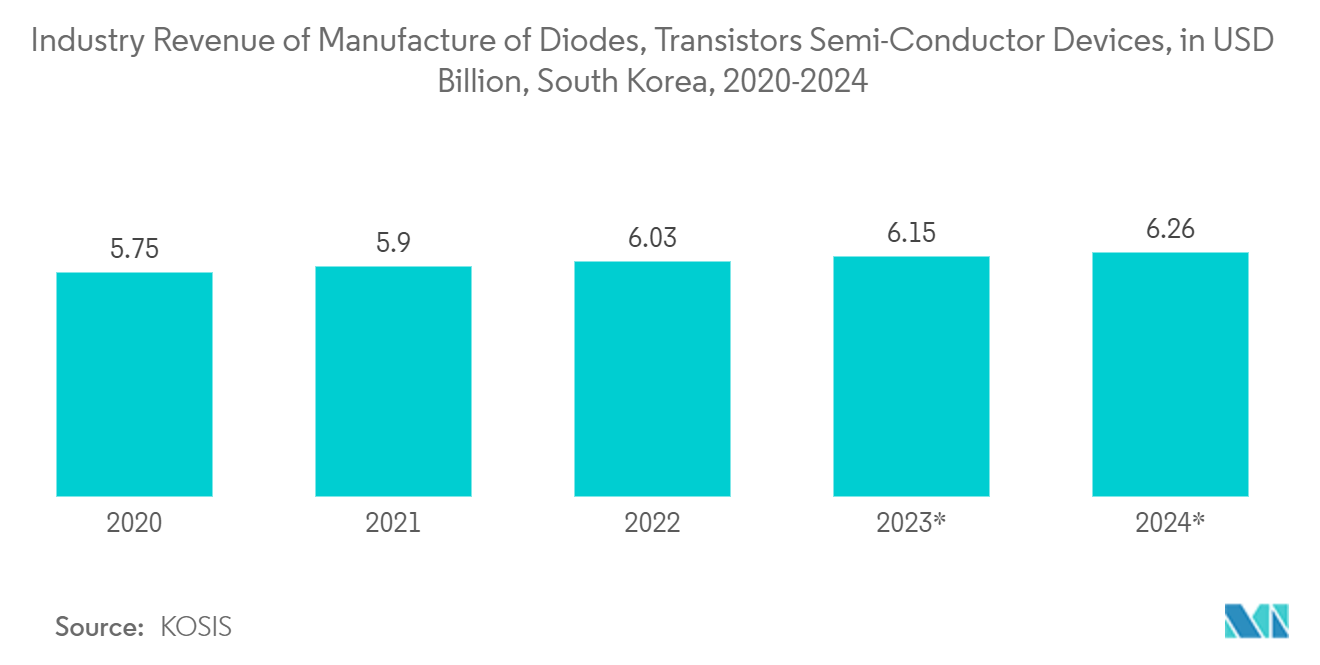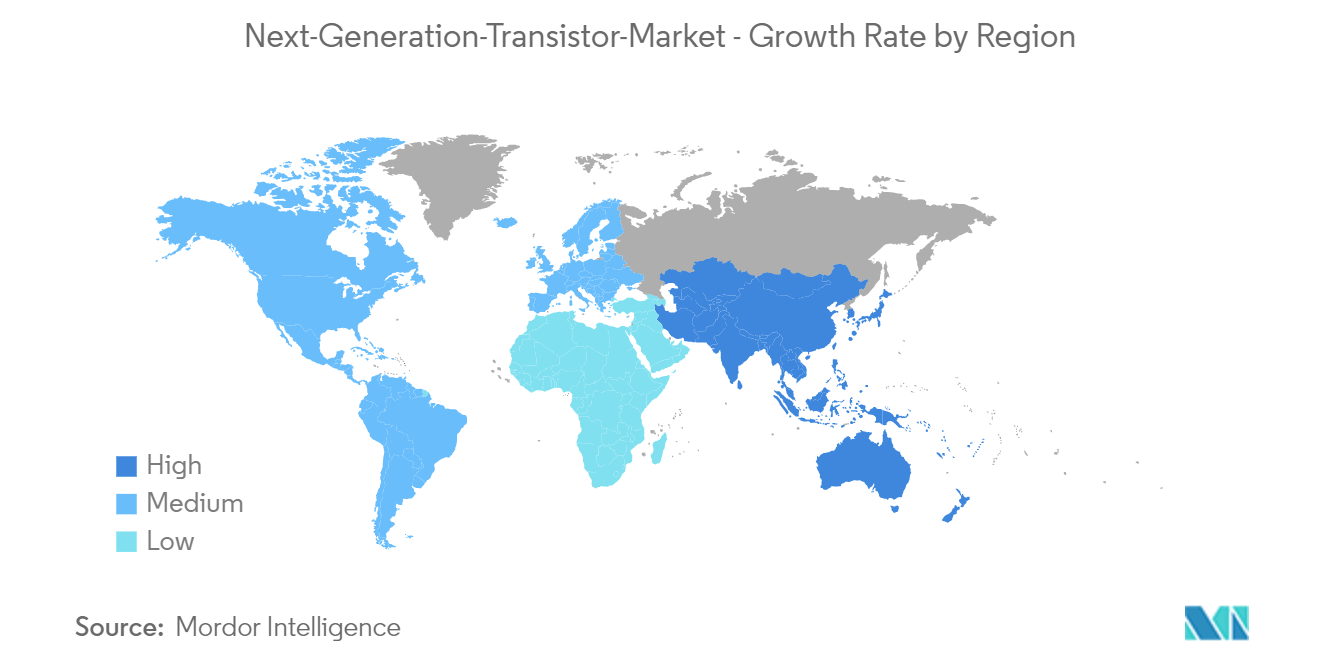Market Trends of Next-Generation Transistors Industry
This section covers the major market trends shaping the Next-Generation Transistors Market according to our research experts:
Increasing adoption of High Electron Mobility Transistor (HEMT)
- High electron mobility transistors produce high gain, making these transistors very useful as amplifiers. They can quickly switch speeds. And shallow noise values are produced as the current variations in these transistors are relatively low.
- Many companies are developing HEMT devices that operate at higher frequencies than conventional transistors. For instance, in November 2022, Nanoscience Technology announced a new low RDS(on) 650V E-mode GaN HEMT device. In a standard 8x8 DFN package, INN650D080BS power transistors have an on-resistance of 80m (60m typical), enabling higher power applications such as totem pole LLC architectures or fast battery chargers.
- For instance, in September 2022, Ampleon Launched a new CLL3H0914L-700 GaN-SiC High-electron-mobility transistor. This rugged GaN transistor is optimized for radar executions where long pulse width and high-duty cycles are needed. The transistor was engineered to accomplish over 700W of peak output power from a single transistor while operating at a voltage of 50V with industry-leading efficiency of over 70%, as well as developed thermally for long pulse applications, such as pulse widths (~2 milliseconds) and 20% duty cycles.
- Moreover, the growing demand for consumer electronics and the applicability of high electron mobility transistors drive market growth. According to IBEF, the Indian appliances and consumer electronics industry stood at USD 9.84 billion recently and is expected to more than double to reach INR 1.48 lakh crore (USD 21.18 billion) by 2025. Such developments in consumer electronics will further drive the studied market growth.
- Furthermore, STMicroelectronics recently announced a new family of GaN parts designated STi2GaN, which stands for ST Intelligent and Integrated GaN. The pieces use ST's bond-wire-free packaging technology to provide robustness and reliability. The new product family aims to leverage the high-power density and efficiency of GaN to offer a range of 100- and 650-V high-electron-mobility transistor (HEMT) devices.

Asia Pacific to Experience Significant Market Growth
- The Asia Pacific region is an electronics hub with billions of electronic devices manufactured annually for consumption, specifically in this region. However, the Asia-Pacific region plays a significant role in exporting electronic components across the globe. The rapid growth in the consumer electronics market in this region is the key growth factor for the Asia-Pacific region in the Global Next Generation Transistor Market.
- Furthermore, the developing economies of the region, such as China and Japan, have massive electronics manufacturing bases and hold the potential to become significant players in the transistors market. Further, the next-generation phones would be entirely focused on improving the performance of phones with better specifications. Integrating more transistors is expected to direct to smaller phones with faster processing, which caters perfectly to consumer needs. According to IBEF, Shipments of "Made-in-India" smartphones rose 7% YoY in Q1 2022 to reach over 48 million units, while over 190 million smartphones made in India were shipped.
- According to IBEF, The National Policy on Electronics 2019 targets the production of one billion mobile handsets valued at USD 190 billion by 2025, out of which 600 million handsets valued at USD 100 billion are likely to be exported.
- Furthermore, China has made the growth of its semiconductor industry a key component of its Made in China 2025 agenda to alter this situation. China intends to increase its market share in electronics while having local chip production meet 80% of domestic demand for the numerous smartphones, PCs, and other devices that its 1.4 billion citizens use daily. All of these elements are anticipated to support market expansion.
- Moreover, the region has several players in the semiconductor market, like Samsung, Intel, and TSMC. These firms have acknowledged that starting in 2023, the production of logic devices using the 3nm or 2nm technology generations will gradually switch from the workhorse FinFETtransistor architectures to nanosheet-like architectures.
- Furthermore, in April 2022, The third-largest conglomerate in South Korea, SK Group, will acquire Yes Powertechnix, the only domestic manufacturer of power semiconductors based on a component of silicon and carbide (SiC), which are emerging as a key component of electric vehicles, as part of a group-wide effort to strengthen its battery-related business. SK Inc. said it would purchase management rights and a further KRW 120 billion (USD 95 million) to acquire 95.8% of Yes Powertechnix. Further, the business recently invested KRW 26.8 billion to acquire a 33.6% ownership in Yes Powertechnix. Such development may fuel the region's demand.


